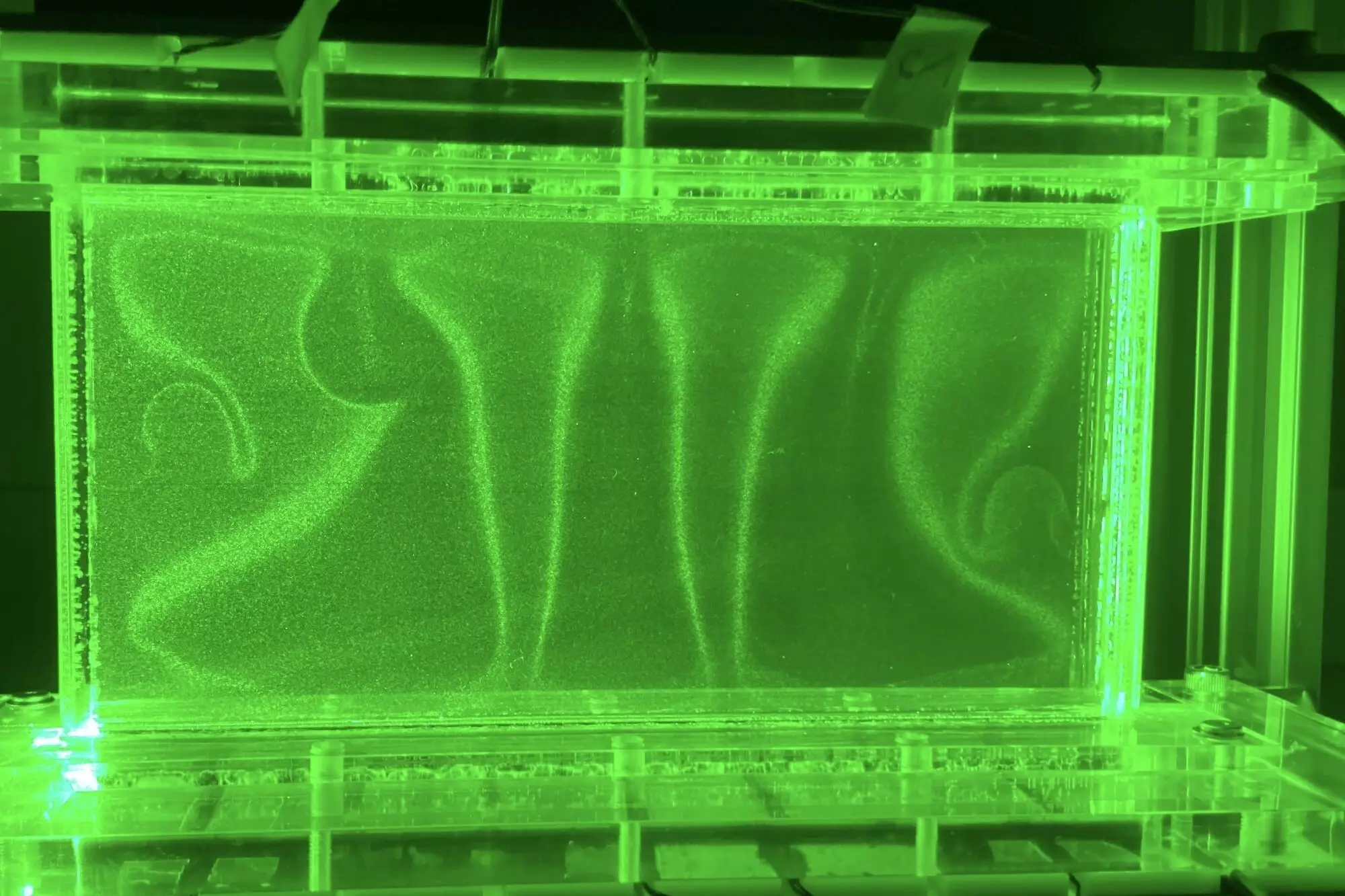In an age where convenience reigns supreme, products like air fryers have captivated culinary enthusiasts across the globe. A simple search on social media for “air fryer recipe” yields a plethora of engaging videos showcasing surefire methods to craft quick, delectable meals. These devices are marketed predominantly for their capability to provide healthier alternatives to traditional frying methods, espousing the benefits of crispy textures without the excessive oil. The heat technology underpinning these kitchen marvels, however, has its roots steeped in fundamental principles that have been appreciated for centuries—specifically, convection heat.
Hugo Ulloa, a respected fluid dynamics researcher at the University of Pennsylvania, demystifies convection by comparing it to natural heating processes. “Imagine heating water in a pot; the heat from the stove warms the water from below, leading to a dynamic movement as warmth creates less dense regions that rise,” he explains. This natural principle of convection is ubiquitous—not limited to home kitchens but prevalent in discussions about everything from ocean currents to geological phenomena. Yet, Ulloa acknowledges a gap in our understanding: the complexities of heat behavior in confined environments pose unique challenges yet to be fully addressed.
Turning Knowledge into Innovation: Research Breakthroughs
Ulloa, together with a team including postdoctoral researcher Daisuke Noto and Juvenal A. Letelier from the University of Chile, has contributed significantly to advancing our knowledge in this field, recently publishing groundbreaking findings in the *Proceedings of the National Academy of Sciences*. Their research delves into the behaviors of fluids within super-confined spaces, illuminating the pillars of fluid mechanics that govern heat transfer efficiency. “Our findings underscore that heat transfer can be optimized or sabotaged by the limits of confinement and the specific flow conditions,” Ulloa states, underscoring the practical implications of their study.
Their experimental journey involved using a Hele-Shaw cell, a setup featuring two parallel plates with a narrow gap in between. By varying the gap size and the temperature gradient, ranging from minuscule 2 mm separations to 4 mm intervals, the researchers could effectively manipulate heated fluids within this confined realm. “What’s remarkable is observing thermal plumes—small mushroom-like structures emanating from the base—that create convection currents in this restricted environment,” Noto elaborates.
The emergence of these structures prompts critical questions regarding how confinement impacts the thermal dynamics at play. As the system becomes more constrained, the behavior of these plumes shifts dramatically—the researchers witnessed a transition from three-dimensional growth to primarily two-dimensional flows. This transition introduces significant variations in heat transfer efficiency that could redefine our approaches to numerous applications, from geothermal energy extraction to innovative biomedical devices.
The Future of Heat Transfer: Bridging Gaps and Driving Innovation
The implications of this research extend far beyond academic pursuit; it offers a framework for enhancing heat transfer techniques that could revolutionize industries reliant on precision thermal management. “By establishing a new metric—the degree of confinement (λ)—we have the potential to optimize designs for heat transfer across a multitude of technologies,” Ulloa mentions, emphasizing the broader importance of understanding fluid dynamics in scenarios that deviate from conventional three-dimensional modeling.
Investigating confined systems unlocks avenues for sustainable technology development. Ulloa and his team are already planning further research focused on how convection impacts the mixing of compounds within restricted spaces. Understanding how various physical properties interact under differing degrees of confinement will not only shed light on ecological environments—affecting nutrient distribution in places like hydrothermal vents—but will also offer advancements in industrial applications.
As the team probes deeper into this fascinating interplay between heat, fluids, and environmental elements, their work may pave the way for more efficient energy systems and improved cooling solutions for modern devices that are increasingly powered and generating more heat. The insights gained from their meticulous approach stand poised to make a lasting mark on diverse fields and industries that value efficiency and sustainability.
By integrating these experimental and theoretical frameworks, the research not only enhances our theoretical knowledge but also emphasizes the pressing need for practical applications that reflect our commitment to a sustainable future. As Ulloa too aptly puts it, nearing the project’s subsequent stages: “We’re not just looking at how heat moves; we’re expanding our understanding of how particles, nutrients, and gases coexist within these confined environments.” This enthusiasm for expanding knowledge will undoubtedly yield innovations that benefit a spectrum of scientific and industrial endeavors.

